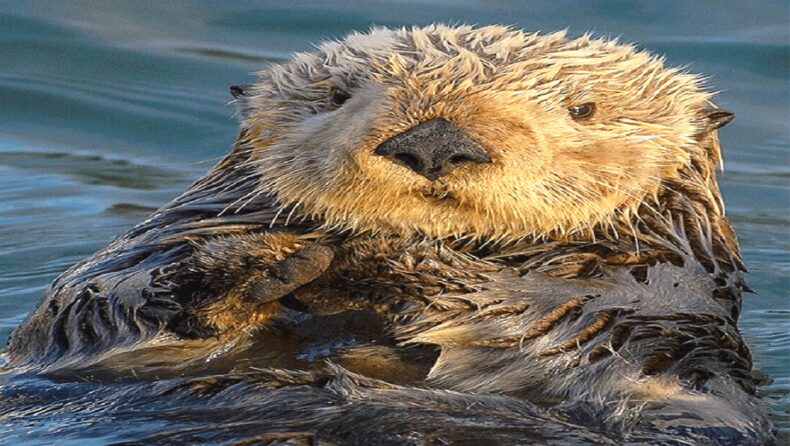Alaskan Sea Otters have become the favorite meal of wolves as the hunting rate has gone up by 25%.
In 1943, Sea Otters (Enhydra lutris) in Alaska ranged from 100,000 to 125,000 in population and fell to 73,000 in 2006. This fall has put the species on the edge of extinction. As the wildlife research team takes certain measures, the species is being brought back from dying out.
Recent studies have pointed out that wolves have hunted the species on the island to their maximum.
Adaptation of wolves to Sea Otters:

Image source: gerona.ca
The pack of wolves around the island gets the Sea Otters from the shallow waters and from the shores. When research was made on this, between 2015 and 2020, the dependency of wolves on deer for food is reduced from 75% to 7%, whereas it reciprocates in the dependency on Sea Otters, which increased from 25% to 57%.
This shows that after hunting deer around the island, wolves are now paying attention to Sea Otters, making them their main source of food. As a consequence, this again reduces the population of the species.
Pleasant Island is located 40 miles (65 kilometers) away from Juneau, Alaska, where the primary source of wolves, a land-based predator, has turned out to be otters for the first time.

Image Source : Asiana Times
The wolves (Canis lupus) first took over the deer around the island as their primary source, which plunged the population of the deer in 2013. Nevertheless, the wolves adapted to hunting otters, after their primary source is eradicated, rather than leaving the island, shares a study in the journal “Proceedings of National Academy of Science” on Jan 23.
To know the eating habits of the wolves, the researchers fixed GPS on the pack. Analyzing the DNA from 678 samples of the pack’s scat, researchers identified what the wolves would have eaten. This adds proof to the fact that the predators are hunting Sea Otters.
The GPS data gave the information that the wolves aren’t leaving anywhere for hunting, however, they hunt the Sea Otters that are blindsided from the shallow waters to the shore, that are sitting on the rocks when there is low tide.

Researchers’ views:
Gretchen Roffler, a wildlife research biologist at the Alaska Department of Fish and Game, said, “The wolves aren’t just scavenging them.” “They stalk them, hunt them, kill them, and drag them to the land above the shore to consume them,” she said in a statement.
Scientists found no connections between wolves and Sea Otters for around 200 years. Nevertheless, the species has been put close to extinction because of the fur trade during the 19th and 20th centuries. Predators have been introduced to the species recently.
Roffler said,” It surprised me to know the fact that Sea Otters have become the primary source for the wolves that live on this island.”
“Eating a dead Sea Otter washed up to the shores is as ever. “But adapting to the species as the primary source indicates the rapidly spreading behavior of the pack and how it has learned quickly,” Roffler added.













